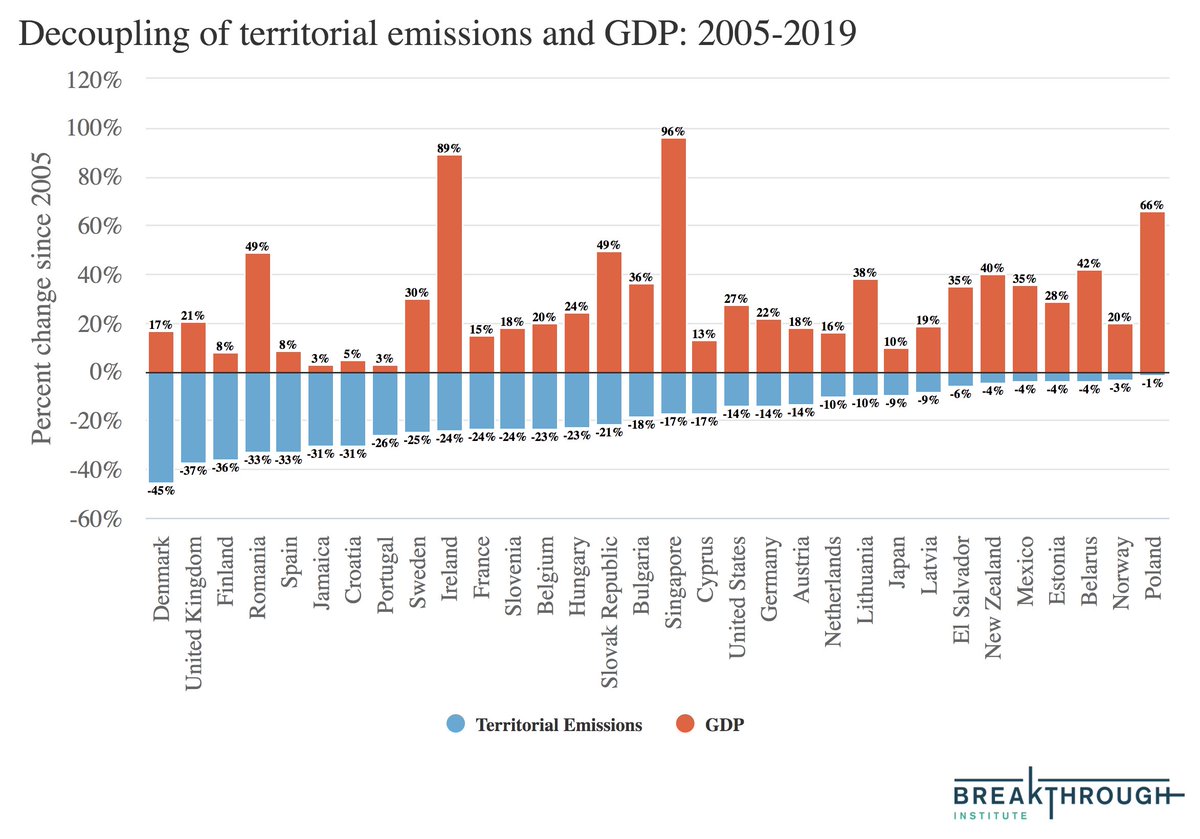
As the world adopts climate policies and the price of clean energy falls, we have and will continue to move away from some of the worst climate outcomes of 4C+ warming. But this should not distract us from our ultimate goal of getting emissions to net-zero thewellnews.com/in-the-news/we…
A decade ago the world seemed on track for a very dark climate future. Global emissions were increasing at 3% per year, China was building a new coal plant every three days, and the idea that emissions could double or triple by 2100 did not seem that far-fetched.
Today things have changed markedly. Global coal use peaked back in 2013, and the International Energy Agency’s (IEA) most recent World Energy Outlook suggests that coal is now in “structural decline.” Global emissions are still increasing, but at a rate of only 1% per year. 

Clean energy is the cheapest new form of generation in many countries, and the recent IPCC 6th Assessment Report acknowledges that “the likelihood of high emission scenarios such as RCP8.5 or SSP5-8.5 is considered low in light of recent developments in the energy sector.” 

Thirty-two countries have absolutely decoupled their emissions from economic growth, and global emissions may begin to fall this decade as countries are increasingly committing to more ambitious near-term and long-term climate policies. thebreakthrough.org/issues/energy/… 

Countries responsible for over two thirds of global emissions – including the US, China, EU, UK, Japan, South Korea, and others have made commitments to reach net-zero emissions by 2050 or 2060.
At the same time, the world is not on track today to reduce emissions rapidly enough to meet the Paris Agreement goal of limiting warming to well-below 2ºC. The world is currently on track for a central estimate of just under 3ºC warming by 2100 under policies in place today. 

If we include near-term 2030s commitments made by countries under the Paris Agreement, this puts us on track for around 2.4ºC warming. Including mid-century net-zero commitments puts us on track for right around 2ºC. thebreakthrough.org/issues/energy/…
However, these long-commitments are in some cases stated goals rather than codified in legislation; the translation of long-term commitments into near-term goals will go a long way toward demonstrating how seriously we should take these targets.
These future warming estimates come with some large uncertainties; we do not fully understand how the climate will respond to our emissions, or precisely how the ability of the land and oceans to take up a portion of our emissions will change as the world warms. 

These uncertainties are not our friend; while our central estimate of warming from current policies is 3ºC by 2100, we cannot fully rule out a chance of 4ºC if we get unlucky (or as little as 2ºC if we get lucky). 

There has, thankfully, been some progress in narrowing this uncertainty in recent years. The recent IPCC 6th Assessment Report for the first time meaningfully narrowed the range of climate sensitivity.
https://twitter.com/hausfath/status/1431363287300509696
It is useful to both celebrate progress while acknowledging how far we still have to go. We never needed a 5ºC world as a counterfactual to motivate limiting warming to well-below 2ºC.
As we move down the path toward mitigating climate change we will necessarily limit the range of possible future outcomes; the path we take need not distract us from our ultimate goal of getting emissions down to net-zero.
At the same time, we need to ensure that future emissions scenarios reflect the world that is, rather than what might have been if the progress of the last decade was erased. It is time to focus more on the negative impacts of a 3ºC world – not the RCP8.5 nightmares of a 5ºC one.
• • •
Missing some Tweet in this thread? You can try to
force a refresh








